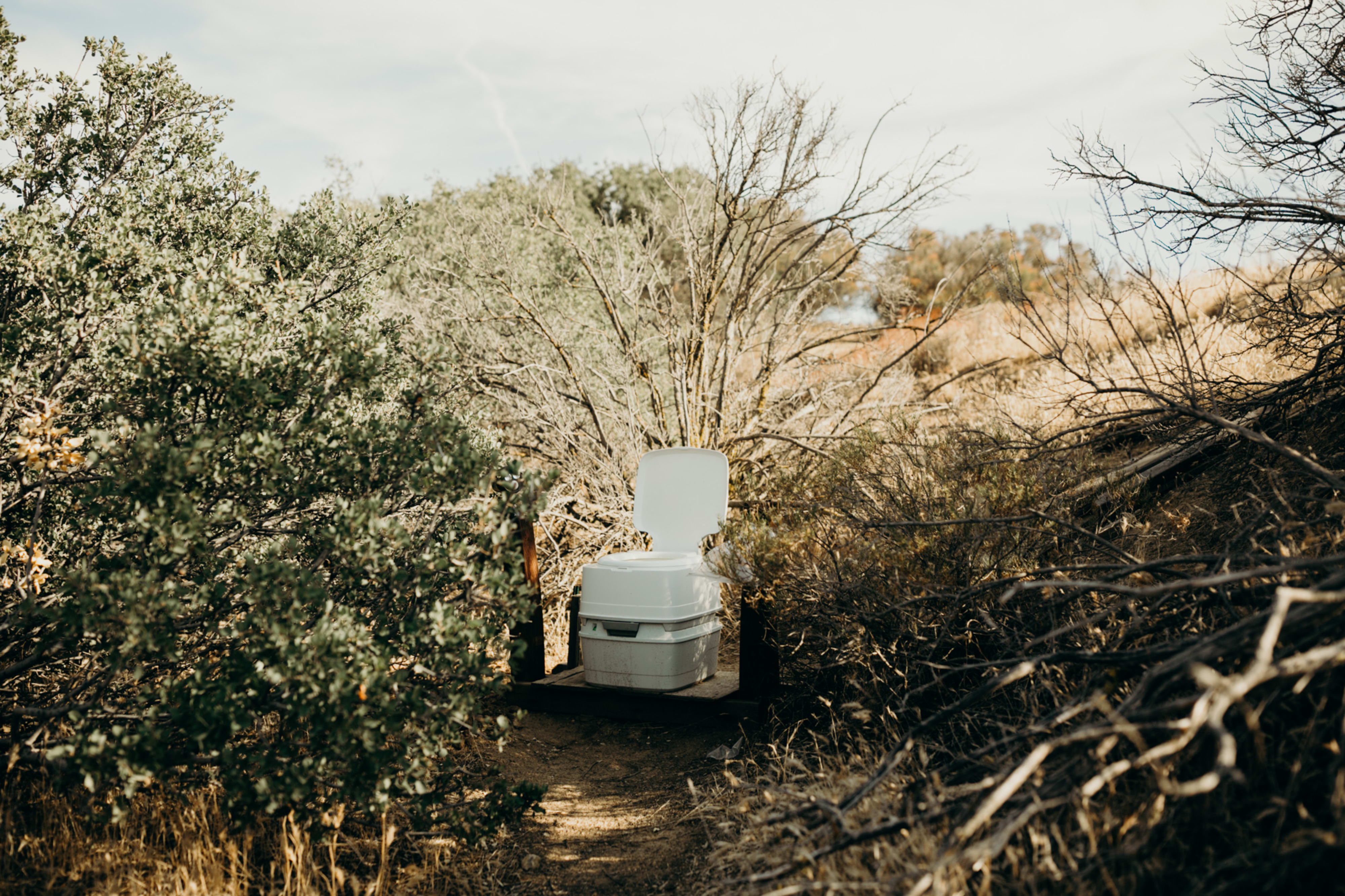Everything You Need to Know About Composting Toilets


Photo by Joe + Katrina Merrell at 360° View Camper, CA
What is a composting toilet?
Composting toilets are non-flushing toilets that use biological processes to treat and break down human waste.
How does it work?
Waste is mixed with sawdust, peat moss, wood shavings, leaves or other alternatives to dispose of waste while using far less water than flushing toilets.
At the most basic level, a composting toilet is composed of the top where campers sit, and the chamber below that collects waste. This composting chamber below has a place for waste storage, a ventilation unit that allows the aerobic breakdown process to occur, a water collection system to remove any excess, and a door to access this chamber for upkeep. More complex systems can vary on construction.
Is it sanitary?
“Composting toilets can be very clean, especially if maintained well,” says William Tarpeh, Postdoctoral Research Fellow at the Department of Civil & Environmental Engineering at the University of Michigan.
Proper upkeep includes regularly removing any waste and monitoring things like temperature, moisture, pH levels, air circulation, etc.
What are the benefits?
- Composting toilets can reduce water usage by up to 60 percent.
- In turn, they help you save money on water — over time, this can really add up! ?
- The broken-down waste helps fertilize soil, eliminating the need for fertilizers or manure. ?
- “Fertilizers can be produced on-site and applied, which reduces monetary costs, greenhouse gas emissions, and energy required for transporting and treating waste. So it’s a great way to ‘green’ your property,” Tarpeh added.
- They are low-maintenance and low-impact, making it easier for landowners in primitive areas to establish a waste-removal system for campers that won’t negatively or permanently impact the land.
What are the drawbacks?
- Composting toilets require upkeep and manual removal of waste periodically, so be prepared for a bit more effort for maintenance.
- If not maintained properly, composting toilets can produce odors and harmful bacteria.
- Most systems require a power source and greywater system.
The most common myths, debunked
Myth: Composting toilets are illegal in many areas.
Regulations vary by state — and many states don’t have codes at all. In general, people that live in a house with a flush toilet can utilize a composting toilet in addition, as long as they have one flush toilet connected to a sewer/septic system, don’t transport the waste across property lines, and don’t create a “public nuisance” like odors or harmful pathogens. Some states even allow composting toilets instead of flush toilets. Check your local laws ahead of time to make sure you get the proper permits.
Myth: Composting toilets smell bad.
Fact: With proper upkeep, composting toilets should be odor-free! Unlike pit latrines, composting toilets transform waste into an odorless material.
Myth: Composting toilets create dangerous pathogens and health hazards.
Fact: When waste is properly composted, it does not contain any pathogens or hazardous materials. As long as the toilet is properly maintained, bacteria break down all the harmful stuff! The end product is a humus-like material that can be used in gardens and is great for soil health.
“While waterborne sewerage has become the norm in the Western world, and certainly has many benefits, it is outdated in some ways…Container-based sanitation is growing rapidly,” Tarpeh said.
Ready to give it a go? Check out our guide on how to build a simple composting toilet in just 45 minutes.
Recent Posts
The Best Places to See Blooming Bluebells in the UK
As springtime hits the UK, the winter blues are replaced with a violet hue of a different kind. A carpet…
Morel Mushroom Hunting Season: The 2024 Camping Guide
Spring is springing. And we all know what that means—the 2024 morel mushroom season is underway. To increase your chances…
Hipcamp Awards 2024: Best RV & Van Spots in the US
To help you find the best camping in the country, each year we compile data from bookings, reviews, and ratings…
Hipcamp Awards 2024: Best RV & Van Spots in Canada
To help you find the best camping in the country, each year we compile data from bookings, reviews, and ratings…
Hipcamp Awards 2024: Best Caravan Spots in Australia
Awards season has arrived! To help you find the best camping in the country, each year we compile data from…
Hipcamp Awards 2024: Best Campervan Spots in the UK
To help you find the best camping in the country, each year we compile data from bookings, reviews, and ratings…